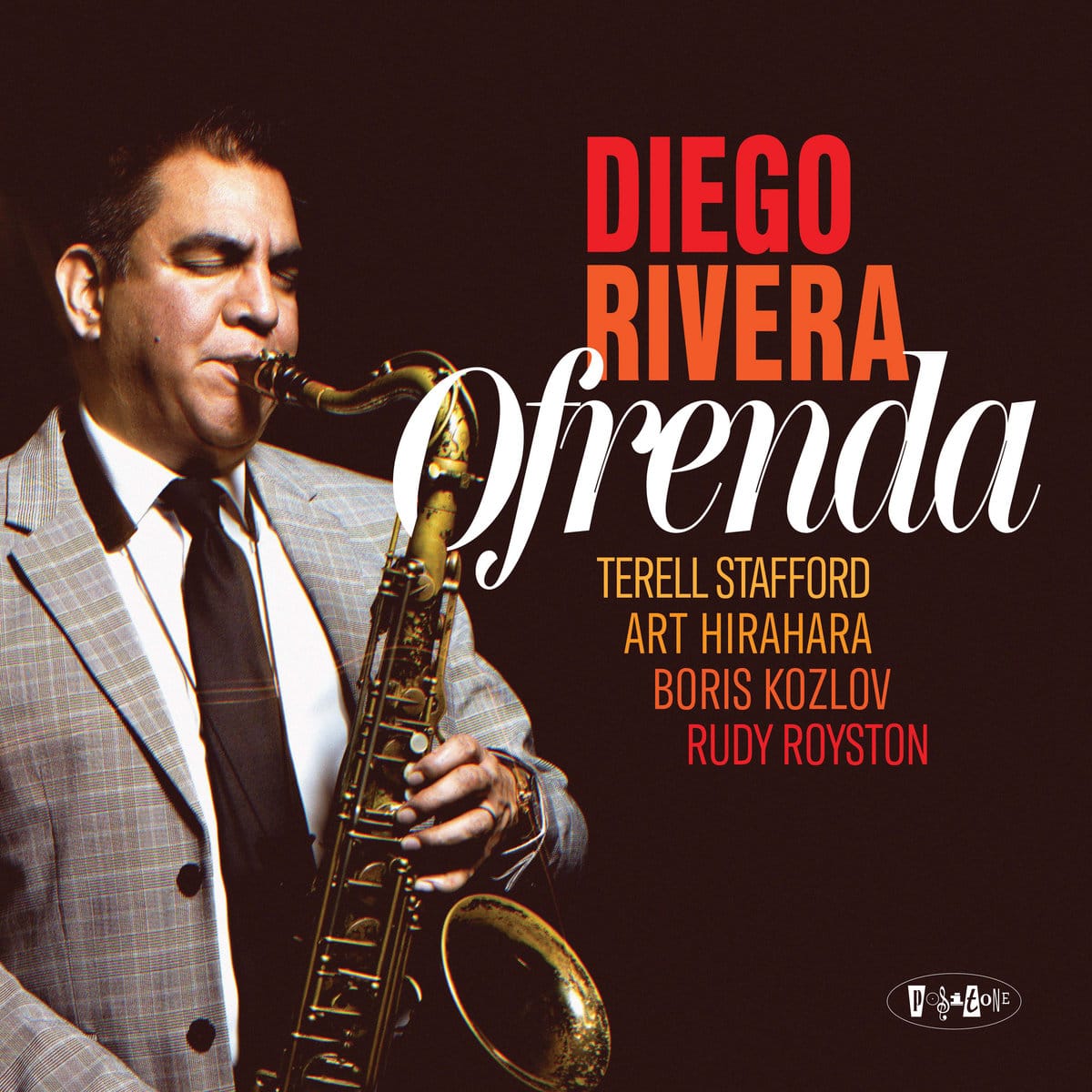In 2022, Mexican American saxophonist Diego Rivera was commissioned by Chamber Music America to compose a jazz suite. He drew inspiration from la ofrenda (‘the offering’), namely an altar in a Mexican family’s home to remember loved ones on Las Día De Los Muertos (‘the Day of the Dead’). And like that festival, the resulting suite is a joyous celebration of life.
Rivera plays muscular but warm-toned straight-ahead jazz infused by his heritage. He has a great ear for a catchy melody, writing tunes that are entirely new yet reassuringly familiar. For a rough idea of what to expect, imagine a Latin-influenced quintet led by one the great sixties Blue Note tenorists (such as Gene Ammons, Johnny Griffin or Joe Henderson) updated for the twenty-first century.
For his sixth recording on Posi-Tone Records as leader, Rivera has chosen pianist Art Hirahara, bassist Boris Kozlov and drummer Rudy Royston, who’ve appeared on previous Rivera albums. They’ve also led and appeared on each other’s albums, so there’s a great sense of relaxed ease between them no matter what the tempo or intensity. Fitting comfortably into the quintet is New York trumpeter Terell Stafford, whom McCoy Tyner has described as ‘one of the great players of our time, a fabulous trumpet player’.
Each track was inspired by aspects of ofrendas. For example, the energetic rhythm of ‘Volver’ (‘to return’) represents the summoning of spirits to the altar, while the contrasting mellow groove of ‘Fotografias’ represents the sweet sorrow of thumbing through photos of dead loved ones, in Rivera’s case photos of his father. But really there’s no need to understand the symbolism to appreciate the music: from the blues on ‘Pan De Muerto’ (‘bread of the dead’), to the gentle waltz feel of ‘Cempasúchil’ (an Aztec marigold known as ‘flower of the dead’), to ‘Cosas’ (‘things’), whose raging energy – complete with a lung-bursting tenor solo and lip-busting trumpet solo – suggests a restless spirit unable to let go of worldly things.
Further contrast is provided on the pretty ‘Papel Picado’ (tissue paper adorning an ofrenda) where Rivera swaps to soprano saxophone and Stafford plays muted trumpet; on ‘Cruz’ (‘cross’) where a funeral is suggested by a repeated piano note symbolising a church bell, a march-like pattern on snare drum, and a mournful harmonised melody on the horns that blends seamlessly into ‘Velas’ (‘candles’), a gentle tune with a bolero bass pattern symbolising hope. Rounding off the suite is the cheerful, dancelike ‘Esqueleto’ (‘skeleton’), which draws on Latin musical forms such as son jarocho (Veracruz sound), a regional folk music with a distinctive 6/8 rhythm.
The ensemble playing is superb, the two horns often counterpointing beautifully on the heads, the rhythm section strong and supple, and everyone getting a chance to solo; the brisk ‘La Calavera’ (‘the skull’) alone has solos on tenor saxophone, trumpet, piano and drums.
In short, this is a cracking album worth the attention of anyone who loves contemporary straight-ahead jazz played at the highest level. And if you love this album, do check out the rest of the Posi-Tone catalogue, as it includes many albums by these musicians and others fanning the flame of the straight-ahead tradition.


